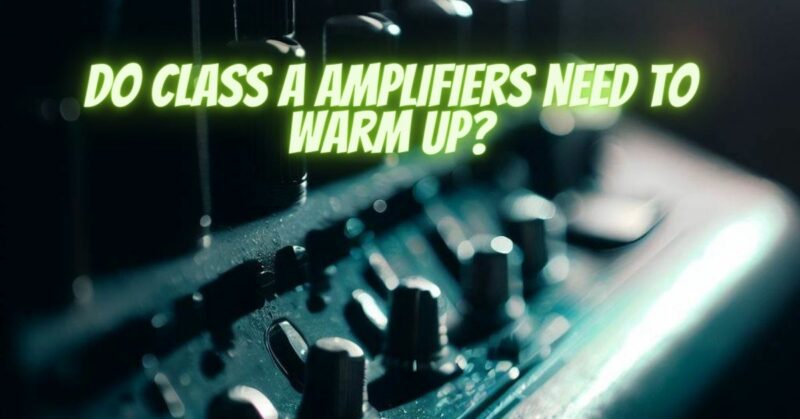Class A amplifiers are a type of amplifier that conducts current through their output transistors all the time, even when there is no audio signal present. This means that they are always dissipating heat, even when they are not being used.
As a result, class A amplifiers can take some time to warm up before they reach their full operating temperature. This is because the transistors need to heat up before they can conduct current efficiently.
The amount of time it takes for a class A amplifier to warm up can vary depending on the amplifier’s design and power output. Some amplifiers may only need a few minutes to warm up, while others may need an hour or more.
In general, class A amplifiers that are designed for high power output will take longer to warm up than those that are designed for lower power output.
Does Warming Up a Class A Amplifier Improve Sound Quality?
There is some debate about whether or not warming up a class A amplifier improves sound quality. Some people believe that the sound quality of a class A amplifier improves significantly after it has warmed up, while others believe that the difference is negligible.
There is some evidence to suggest that warming up a class A amplifier can improve sound quality. For example, one study found that the distortion levels of a class A amplifier decreased after it had warmed up.
However, other studies have found that the difference in sound quality between a cold class A amplifier and a warmed-up class A amplifier is negligible.
Ultimately, the decision of whether or not to warm up a class A amplifier is a personal one. There is no right or wrong answer, and the best way to decide is to experiment and see what you prefer.
If You Do Choose to Warm Up Your Class A Amplifier, How Long Should You Do It?
If you do choose to warm up your class A amplifier, there are a few things to keep in mind. First, it is important to allow the amplifier to warm up gradually. This will help to prevent the transistors from overheating.
Second, you should not turn the volume up too high while the amplifier is warming up. This can also damage the transistors.
Finally, you should only warm up the amplifier for as long as necessary. Once the amplifier has reached its operating temperature, you can start listening to music.
How to Tell If Your Class A Amplifier Is Warmed Up
There are a few ways to tell if your class A amplifier is warmed up. One way is to listen to the sound. A warmed-up amplifier should sound clearer and more detailed than a cold amplifier.
Another way to tell if your class A amplifier is warmed up is to check the temperature of the transistors. The transistors should be warm to the touch, but not hot.
If you are unsure whether or not your class A amplifier is warmed up, you can always consult the owner’s manual or contact the manufacturer.


